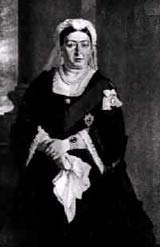Introduction
This first issue of History in Focus looks at Victorian history and the resources available to study it. To find issues on other topics, go to our home page.
In this issue:
- article: an overview of the Victorian era by Anne Shepherd.
- websites: websites about the Victorian Era, reviewed by the In Focus editorial team.
- book reviews: reviews of major books on the Victorian Era. See below for review tasters.
- bibliography: key books on the Victorian Era, listed by publisher, with book summaries and links to publishers' pages.
- research: details of PhD theses about the Victorian Era, and university teachers teaching this Era.
- diaries: extracts from the diaries of four Victorians.
- family history: your guide to researching family history.
Review tasters
- Care outside the Community: Asylums
- The Great Exhibition
- Ireland
- Law and order
- Men and Women: Challenging the Stereotypes
- Politics
Care outside the Community: Asylums
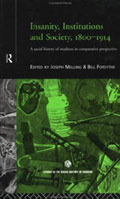
'The gradual appearance of state asylums, however, led to the expulsion of paupers. As Jonathan Andrews demonstrates, the Glasgow Royal Asylum and its physician-superintendent were intent upon "raising the social tone" so that repugnant social mixing would neither deter paying clients from seeking admission nor impede their treatment. By 1897, every pauper had gone.'
The above quotation comes from Dr. Anne Borsay's review of Insanity, Institutions and Society, 1800-1914: a Social History of Madness in Comparative Perspective edited by Joseph Melling and Bill Forsythe. In the authors' response to the review, Joseph Melling remarked:
'The purpose of Insanity, Institutions and Society is to introduce readers to a fresh generation of research on the social history of madness. This new work challenges many of the conclusions reached in the seminal studies of insanity by Michel Foucault and Andrew Scull. The authors also seek to engage with the kind of post-modernist critique of historical practices which Anne Borsay has highlighted in her review. The distance between state provision and class relations forms one of the issues which current and future historians of the nineteenth century will want to explore further.'
The Great Exhibition
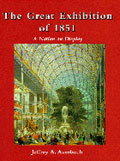
Confidence in industry and commerce was expressed robustly in the Great Exhibition but its history is more complex than commonly acknowledged. The following extracts are taken from the review by Dr. John R. Davis of the book The Great Exhibition of 1851: a Nation on Display by Jeffrey A Auerbach:
Comments regarding the background to the exhibition: 'Faced with the uphill prospect of generating support for the Exhibition - Auerbach counters the notion that it was popular from the start - and funding difficulties, a situation not dissimilar to the Greenwich Dome, the organisers of the Great Exhibition carefully chose to accommodate public concerns and anxieties to a great degree. The original desire of the group at the Society of Arts ..... to raise the standard of design of Britain's industrial produce in an artistic and scientific sense, was soon accompanied by Prime Minister Lord John Russell's concern to celebrate commercial liberalism and Free Trade, the liberal view of the advantages of the British political and social model, the East India Company's conviction of the wealth of the empire in terms of raw materials, the Church's belief in God's benevolence, and so on'.
Comments regarding the exhibitions role in forming a British national identity: ' The heart of Auerbach's argument is that the variety of interpretations put forward and the discussion that took place regarding them was a major event in the formation of a British national identity. A nation, as he puts it, was on display'.
Other Sources:
- Websites
Ireland

The controversy and conflict which hallmark Anglo-Irish relations are echoed in exchanges between historians. Dr L.A. Clarkson's review of A Death Dealing Famine: the Great Hunger in Ireland by Christine Kinealy is a good example of this. Dr Clarkson questions the evidence for the assertion that 'at least one million people died between 1845 and 1851' on the basis that mortality was not officially recorded in Ireland until 1864. Christine Kinealy concedes the lack of official records but counters:
'One million dead is probably a conservative estimate and few people would argue that mortality was any less than this number. My figure is based (as I say) on earlier work done by Professor Cormac O'Grada and others, and corroborated by contemporary estimates.'
Meanwhile, Paul O'Leary warns against an understanding of history based purely on official records. In reviewing The Great Famine and Beyond: Irish Migrants in Britain in the Nineteenth and Twentieth Centuries ,ed. Donald M. MacRaild,he passes the following comment on John Belchem's chapter regarding the Irish in Liverpool:
'This study is an explicit statement of the limitations of the census enumerators' books for understanding the social networks of the Irish.'
Other Sources:
- Websites
- Reviews
- Newspapers and Nationalism: the Irish provincial press, 1850-1892
Review by John McGurk
Response by Marie-Louise Legg - The Irish in Victorian Britain: the Local Dimension
Review by Alexander Peach
Authors: Roger Swift and Sheridan Gilley (no response)
- Newspapers and Nationalism: the Irish provincial press, 1850-1892
Law and order

Artful Dodgers: Youth and Crime in Early Nineteenth Century London by Heather Shore was reviewed by John Springhall who comments:
'One boy awaiting transportation, George Hickman, told Miles in relation to police corruption that:
"Policemen, especially City Police are so nice - There is one fellow (number given) who behaves very well to us in the City. He never cares about getting a fellow sent to prison for three months because it does him no good, but if he can make an Old Bailey case of it, he takes the Boy up, because he gets his expenses, or something (p. 85)".
The payment of protection or bribes to police is mentioned so often, and by so many children, that Shore believes there must be more than a grain of truth in such statements'.
The actions of the police are also noted by Dr. Maria Luddy in her review of Prostitution: Prevention and Reform in England 1860-1914 by Paula Bartley:
'There is an obvious decline in convictions for prostitution after the introduction of the Criminal Law Amendment Act of 1885. However, while social purity activists claimed a direct influence on this decline it seems that lack of police activity, leading to fewer arrests, was a much more likely reason'.
Other Sources:
Men and Women: Challenging the Stereotypes
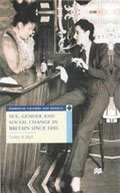
The physical restraints of the whale bone corset act as a powerful metaphor for the social constraints that inhibited Victorian women. But how truly does this image reflect reality? And how universally should it be applied? In her review of the book Sex, Gender and Social Change in Britain Since 1880, Dr. Paula Bartley quotes Lesley Hall's comment that 'Under the crinoline...the Victorian female was a hot little number' (p.16). Responding to the review, Lesley Hall distances herself from the remark and warns against 'blanket characterisation' of any kind.
Meanwhile, in a review of John Tosh's A Man's Place: Masculinity and the Middle-Class Home in Victorian England, Professor Anthony Fletcher comments: 'In this fine book Tosh has blasted the negative and simplified images of the Victorian family'.
Other Sources:
- Websites
- Reviews
- Fertility, Class, and Gender in Britain 1860 - 1940
Review by Professor Michael Mason
Response by Dr. Simon Szreter - Aristocratic Women and Political Society in Victorian Britain
Review by Professor Peter Mandler
Author: K.D.Reynolds (no response) - A Woman's Place, an Oral History of Working Class Women, 1890-1940
Review by Professor Sally Alexander
Response by Elizabeth Roberts
- Fertility, Class, and Gender in Britain 1860 - 1940
Politics
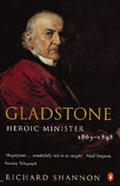
Eugenio F. Biagini reviewed Gladstone: Heroic Minister, 1865-1898 by Professor R. T. Shannon, and made the following observations:
' Allegedly, Shannon's central thesis is that, to the end of his days, Gladstone was an unreconstructed Peelite, "a Peelite ... in Liberal guise ... He became a Liberal ... the better to be a Peelite...." '
'... we are told that Gladstone "did not need Liberalism" (p.xv) to become what he was. Of course, this raises a question which Shannon does not address, i.e. whether Peel himself was really a Liberal in disguise, or whether Gladstone was the true - albeit unacknowledged - leader of Victorian Conservatism (a view which Disraeli and Salisbury would, no doubt, have found interesting)'.
Professor R. T. Shannon's response:
'Obviously, a Peelite thesis so defined must be very near the centre of my reading of Gladstone. What he learned from his great master Peel was the potency and privilege of executive government against parliament; and within that frame of the instrumental role of party as the leverage of heroic politics. Peelism was the executive muscle of Gladstones levering'.

